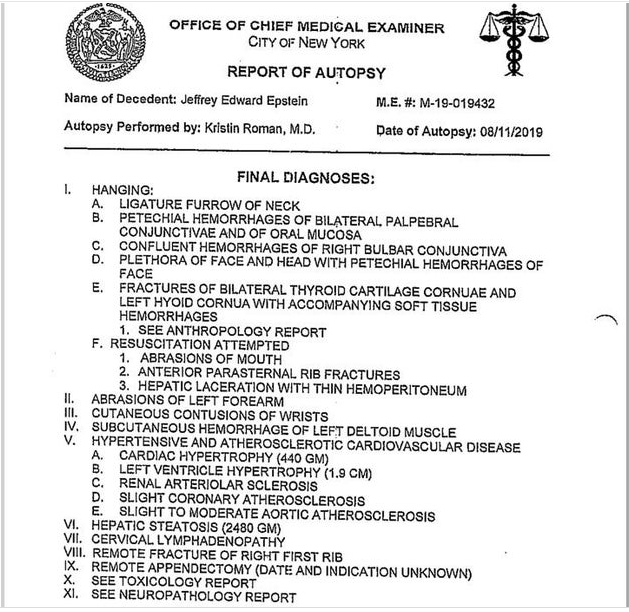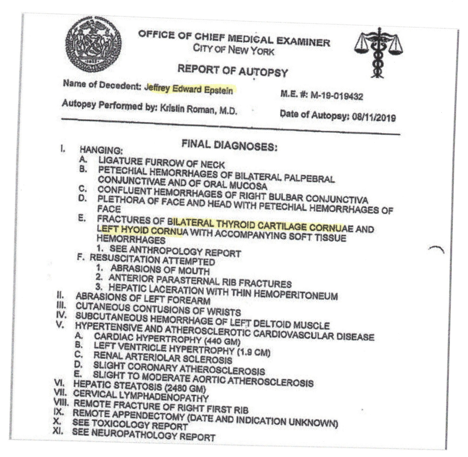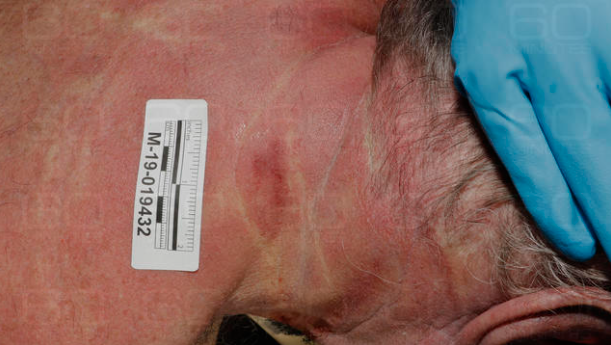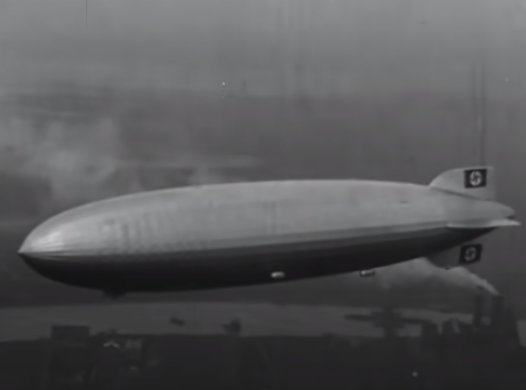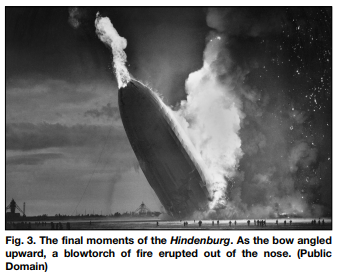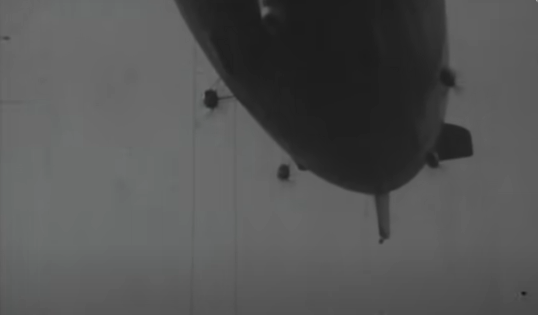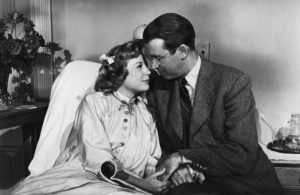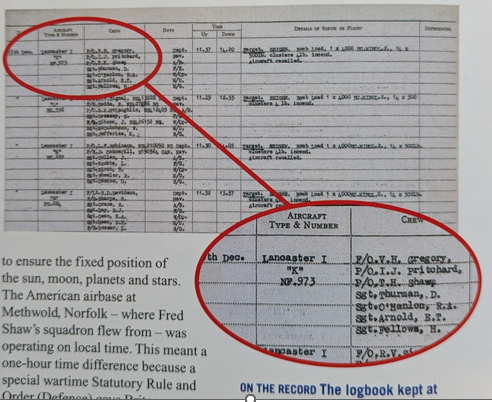 On August 10, 2019, Jeffrey Edward Epstein—a 66-year-old American mega-millionaire and registered sex offender powerfully connected to presidents and royalty—died in his prison cell at the Special Handling Unit of New York’s Metropolitan Correctional Center. The coroner ruled the death a suicide but, shortly, the publicly-exposed mass of improprieties surrounding Epstein’s custody control and supervision within the detention facility raised a massive foul play speculation. Many properly wondered, “Did Jeffrey Epstein really kill himself?”
On August 10, 2019, Jeffrey Edward Epstein—a 66-year-old American mega-millionaire and registered sex offender powerfully connected to presidents and royalty—died in his prison cell at the Special Handling Unit of New York’s Metropolitan Correctional Center. The coroner ruled the death a suicide but, shortly, the publicly-exposed mass of improprieties surrounding Epstein’s custody control and supervision within the detention facility raised a massive foul play speculation. Many properly wondered, “Did Jeffrey Epstein really kill himself?”
It wasn’t just the crazy conspiracy theorists who wondered if Epstein truly committed suicide. There were just too many suspicious circumstances to ignore. Switches in cellmate placements. Epstein left unchecked for nearly eight hours before his death while under a suicide watch. Security cameras on his cell being disabled. Guards “asleep” at their station. Falsified records. No cell search for contraband. A blatant disregard for prison policies and procedures set in place to prevent such a death. Plus, the horde of high-profile people Epstein had dirt on.
Then, there’s the autopsy review by America’s high-profile forensic pathologist, Dr. Michael Baden, who said Epstein’s broken neck bones could not have been caused by a self-inflicted, ligature hanging. In Baden’s opinion (who performed more than 20,000 autopsies in his 45-year career), it was far more likely Epstein was a homicide victim than a suicide statistic.
On June 27, 2023, the United States Department of Justice (DOJ), through its Office of the Inspector General (OIG), released a 128-page report on the Jeffrey Epstein in-custody death investigation. Before dissecting the report and reaching a conclusion, let’s review who Jeffrey Epstein was and the facts leading to his sudden and unnatural death.
Putting it bluntly, Jeffrey Epstein was an enormous con man and an extreme pervert. He was born in Brooklyn in 1953 and completed high school with skipped-grades but never sought a college degree. That didn’t stop him from getting a physics and math teacher’s position at the prestigious Dalton School in Manhattan. Epstein was quickly fired for inappropriate behavior towards underage female students.
Epstein reinvented himself as a banker. Given credit where credit is due, Epstein functioned at a near-genius level with figures. He worked his way toward the top of Bear Stearns but was “dismissed” for regulatory violations.
He went on his own, founding International Assets Group which specialized in money recovery for extremely wealthy clients. He once called himself a high-level bounty hunter. Because he excelled at this job, he quickly acquainted himself with some of the richest people in the world as well as those socially and politically elite.
In 1987, Jeffrey Epstein joined Towers Financial Corporation as a “consultant”. By 1993, Towers imploded in one of the biggest Ponzi schemes America had ever seen with over $900 million in today’s value simply gone. Epstein escaped unscratched and went on to an even bigger venture.
He founded J. Epstein & Associates in 1988. Its cover was to manage assets of clients with a minimum of $1 billion net worth—an exclusive club at the least. In 1996, he changed the name to the Financial Trust Company with a new headquarters in the U.S. Virgin Islands tax-shelter haven. Another venture was Liquid Funding Ltd. which was a novel and clever debt-repo service partnered with Bear Stearns that collapsed in the 2008 financial meltdown.
Through these years, Jeffrey Epstein amassed an unknown pot of wealth. Personal properties included a Manhattan mansion, one in Palm Beach, Florida, a New Mexico ranch, and an exotic island getaway called Little Saint James in the Virgin Islands. It was here that some of the sinister sexual seductions with underage girls took place.
Jeffrey Epstein surrounded himself with the elite of the elites. Tarred by the Epstein brush were people like Prince Andrew of the British Royal Family, U.S. Presidents Bill Clinton and Donald Trump, Israeli Prime Minister Ehud Barak, British Prime Minister Tony Blair, Saudi Crown Prince Mohammed bin Salman, Cuban Dictator Fidel Castro, financial titans like Bill Gates, Richard Branson, and Rupert Murdoch, and celebrities such as Harvey Weinstein, Woody Allen, Michael Jackson, Alex Baldwin, a host of Kennedys, and the beat goes on.
The Epstein sex scandals surfaced in 2005. The Palm Beach conducted a 13-month undercover investigation on Epstein that brought in the FBI because of its international scale. Eventually, sixty young females gave evidence of being sex-trafficked through Jeffrey Epstein, his properties, and his female co-conspirator, British socialite Ghislaine Maxwell (who is now serving 20 years for sexual offenses against minors).
One of the sworn allegations was that Epstein had 12-year-old triplet girls flown in from France who he sexually assaulted and had them returned the next day. Other girls came from Brazil, the Soviet Union, and across Europe. These minors were facilitated by Maxwell through her contacts in Jean-Luc Brunel’s MC2 Modeling Agency.
Epstein was arrested in Palm Beach in July 2006 on child abuse charges. These serious allegations were plea-bargained down to one count of procuring a minor and one count of soliciting a prostitute. It was called the “sweetheart deal of the century by the U.S. Attorney General who eventually had the prosecutor fired for agreeing to an Epstein guilty plea resulting in 18 months of open custody.
Meanwhile, Epstein went back to work as a money-maker and a kiddie-diddler. Then the civil suits started, and the criminal investigation continued. He was again arrested by the FBI for sexual offenses against minor girls, this time in New York after returning from Europe. That was on July 6, 2019. He was denied bail and sent to the Special Handling Unit (SHU) at the Metropolitan Correction Center (MCC) operated by the Federal Bureau of Prisons (FBP). Epstein remained there for 35 days until he died on August 10.
To understand what led to Jeffery Epstein’s death, it’s vital to know the chain of events that occurred to allow this to happen. This timeline is clearly laid out in Chapter 3 of the DOJ-OIG report titled Timeline of Key Events. Here is a summary.
September 21-24, 2018 — The FBP at MCC contracts to have their video surveillance system updated from analog to digital recorders.
March 17, 2019 — Resources for video upgrades are temporarily reassigned to other work leaving the recording portion half-finished. Livestream cameras are operational for real-time surveillance but cameras in the Special Handling Unit (SHU), including those near Epstein’s future cell won’t record.
July 2, 2029 — A New York federal grand jury indicts Epstein on child sex trafficking charges. A warrant is issued.
July 6, 2019 — Epstein is arrested at a New Jersey airport as he returns from France. He is incarcerated as a pretrial detainee at MCC. The news stories are viral and he is assigned to the SHU for protection from other inmates.
July 8, 2019 — Epstein is arraigned and pleads not guilty. The MCC Chief Psychologist routinely interviews him and finds no evidence of suicidal thoughts.
July 10, 2019 — Guards report Epstein appears “distraught, sad, and a little confused”. A specific suicide risk assessment is done, and the MCC administration assigns Epstein a suitable cellmate as a safety precaution.
July 11, 2019 — Epstein is re-evaluated as a suicide risk. The psychologist minimizes the potential and orders weekly follow-ups.
July 18, 2019 — A federal judge denies Epstein bail even though he offered a $100 million surety. The judge found Epstein “a danger to the community and a flight risk.”
July 23, 2019 — At 1:21 am, guards hear a commotion coming from Epstein’s cell. Epstein was on the floor, semiconscious, with an orange bedsheet strip around his neck. There are notable skin injuries on Epstein’s neck. The cellmate says he woke up hearing Epstein in distress. Epstein said the cellmate tried to kill him. Epstein is moved to the Psychiatry Unit and placed on a suicide watch, alone in a cell.
July 24, 2019 — Epstein is removed from the suicide watch after another psychiatric assessment but is still left alone in a cell at the Psych Unit.
July 25-29, 2019 — Daily interviews are done. Epstein emphatically denies having suicidal tendencies and states he does not remember how he received injuries to his neck.
July 30, 2019 — Epstein is transferred back to the SHU and placed in a cell visible from the guard station. MCC administration orders that Epstein be assigned a new cellmate. A suitable candidate is found and housed with Epstein.
August 2, 2019 — MCC administration concludes its investigation into the suspected Epstein suicide attempt on July 23 and determined they cannot conclusively categorize it as a suicide attempt.
August 8, 2019 — Epstein has a private meeting with his lawyers and updates his will. The prison staff is not aware of this change.
August 9, 2019 — Epstein’s cellmate is moved out at the request of the U.S. Marshals and taken to an out-of-state facility. Epstein is once again alone.
August 9, 2019 — Over two thousand pages of evidence in proceedings against Ghislaine Maxwell are unsealed. They contain very damaging evidence against Epstein, and they receive international media attention. Epstein meets with his lawyers. He then makes an unauthorized phone call to an unknown person.
August 9, 2019 — The last known bed check on Epstein happens at 10:40 pm.
August 10, 2019 — Guards begin breakfast service at 6:30 am. They find Epstein semi-suspended with his buttocks 2 inches from the floor with his legs straight out. A torn prison sheet is noosed around his neck and tied to the upper bunk ladder. Epson is unresponsive. Resuscitation fails, and he’s taken to the morgue.
August 11, 2019 — The New York City Coroner’s Office autopsies Epstein and rules the death a suicide caused by hanging.
June 27, 2023 — The DOG-OIC report titled Investigation and Review of the Federal Prison’s Custody, Care, and Supervision of Jeffrey Epstein at the Metropolitan Correctional Center in New York, New York is released. They concluded there were “numerous and serious failures by MCC New York staff including multiple violations of MCC and BOP policies and procedures” that included falsifying records to cover up the lack of supervision on the night of August 9/10. The report upheld a suicide ruling and made eight recommendations to minimize a re-occurrence of the Jeffrey Epstein event.
— — —
That’s the timeline of what led to Epstein’s death. Let’s deal with the highlights before wrapping up with the biggest issue of all—that the autopsy findings allegedly support a homicide ruling over a suicide.
Cell Search — The BOP has a policy of ongoing cell searches to locate contraband or items that an inmate could use to harm themselves or others. The report found no record that Epstein’s cells had ever been searched and that he had an excess of bed linens that he could use to make a hanging ligature.
Cell Checks — The last recorded cell check on Epstein was at 10:40 pm on August 9. He was found at 6:30 on the 10th. Checks are to be made hourly so that’s eight checks in a row that were missed. This is what the two night-shift guards falsify. However, they were caught by their own cameras.
Faulty Cameras — The conspiracy crowd made a lot of media and internet noise over the “disabled” cameras. The DOJ/OIG report takes a deep dive into this issue in Chapter 6. They found nothing intentional had been done to sabotage the cameras. Every camera aimed at Epstein’s cell was in proper working order except they were only on livestream mode. The recorders had never been updated. Typical bureaucratic inefficiency.
The only recorded video, though, was crucial. That was the camera with both Epstein’s cell door and the guard station in the viewfinder. It was clear evidence that no one had gone near Epstein’s cell door from 10:40 pm until 6:30 am. It was also clear that both guards in the recording never moved from their station during the same time. Apparently, they were asleep. Later, they were convicted of falsifying the bed check documents.
The Cellmates — The report does not name either of Epstein’s cellmates, but it does detail every move, the reasons for the move, and the concern the MCC administration staff had about a suitable watch person being with him at all time.
The Previous Suicide Attempt — The report overrules the MCC finding that there wasn’t sufficient evidence of a clear earlier suicide attempt. The OIG investigation notes this was a huge red flag and Epstein’s supervision should have been done accordingly.
The Ghislaine Maxwell Documents — This was the proverbial straw that broke Epstein’s back. He knew his case was hopeless and that he’d be spending the rest of his life in jail. It was now just waiting a suitable moment for him to hang himself. He found it on the night of August 9/10 when he was alone and unsupervised.
The Will and the Call — Both events seem suspicious, but the report lets the BOP and MCC off light here. There is no way prison officials could know what was going on in a meeting between Epstein and his attorneys. And there is no way to know what was said in a 27-minute private call that happened around 9:00 pm on August 9th despite that Epstein was supposed to be under outgoing call monitoring. He was using an unauthorized smuggled smartphone that should have been discovered if he’d ever had a cell search.
— — —
So, let’s deal with the autopsy and the controversial broken neck bones. Dr. Kristen Roman, M.D. was the prosector (a person who dissects bodies.) She was a very experienced forensic pathologist employed by the New York City’s Medical Examiner Office. Her report’s final diagnosis is very clear, and the coroner has never deviated from it. Rather than paraphrase it, see the image below
The “broken neck bones” referred to by the news media through Dr. Michael Baden (who was hired by Jeffrey Epstein’s brother to second-guess the suicide ruling) are not bones at all—certainly not true neck bones like the thoracic and cervical vertebrae that make up the upper spine. Dr. Roman refers to “fractures of bilateral thyroid cartilage cornuae and left hyoid cornua”. These two anatomical features are soft cartilage in the throat—one supports the tongue, and the other supports the thyroid gland. They are almost always damaged or “fractured” in ligature hangings.
Let’s go to the source of this “broken neck bone” trouble. Dr. Baden gave an interview to Fox News on October 30, 2019. Here’s a Fox News quote from that show.
Jeffrey Epstein’s autopsy is more consistent with homicidal strangulation than suicide, Dr. Michael Baden reveals.
He noted that the 66-year-old Epstein had two fractures on the left and right sides of his larynx, specifically the thyroid cartilage or Adam’s apple, as well as one fracture on the left hyoid bone above the Adam’s apple, Baden told Fox News.
“Those three fractures are extremely unusual in suicidal hangings and could occur much more commonly in homicidal strangulation,” Baden, who is also a Fox News contributor, said.
While there’s not enough information to be conclusive yet, the three fractures were “rare,” said Baden, who’s probed cases involving O.J. Simpson, President John F. Kennedy, Martin Luther King, record producer Phil Spector, New England Patriots star Aaron Hernandez, and many others.
“I’ve not seen in 50 years where that occurred in a suicidal hanging case,” the 85-year-old medical legend told Fox News.
There are three things wrong with the Baden/Fox release.
- Given credit to Dr. Baden for correctly identifying the hyoid and thyroid cartilages, it was Fox News that sensationalized them as a broken neck. ie – this couldn’t have happened in a suicide hanging so it had to be a murder.
- Dr. Baden is out-of-line stating the hyoid and thyroid cartilages fractures are extremely unusual in suicidal hangings and are more consistent with manual strangulations.
- Dr. Baden infers that he was physically present at the autopsy as an independent observer hired by the Epstein family.
Let’s examine these issues.
Dr. Roman’s autopsy report is very clear. She was the one who examined the body, and her findings are conclusive. She refers to the fractured hyoid and thyroid cartilages and never refers to them as neck bones or a broken neck as in vertebrae fractures. She clearly concludes Epstein hung himself with a torn bedsheet and no one else was directly or indirectly involved in intentionally causing his death.
In Chapter 7 of the OIG report titled Conclusions and Recommendations, the investigators deal with the Baden interview and his statement that fractured hyoid and/or thyroid cartilages rarely occur in suicide ligature suspensions. They interviewed Dr. Roman who contradicted Dr. Baden confirming that these fractures often occur in cases like the Epstein death. She pointed out that the ligature was a wide bedsheet fragment and not a small-diameter cord like the electrical connection on the C-PAC machine found in Epstein’s cell.
Dr. Roman explained the mechanism of the ligature and how the forces worked in this case. Because the fabric and the tied knot were wide, they created an upward furrow that was evident on Epstein’s neck. She stated the force was at the right location and would have exerted sufficient pressure in his suspended position to cause the cartilage fractures—she would have been surprised if the fractures hadn’t occurred.
The pathologist also commented in the OIG report that there was nothing on Epstein’s body to indicate defensive wounds usually seen in violent homicide deaths. There was no bruising except for the ligature location and what’s known as petechiae in the eyes which are small red dots or blood vessel ruptures caused by the circulation interference. Furthermore, there was no debris in his fingernails associated with a fight, and no contusions on his knuckles.
Nowhere in Dr. Roman’s autopsy report and interview with the OIG investigation does she confirm Dr. Baden being at the autopsy. This (in my experience as a homicide investigator and coroner) is highly unlikely. Autopsies, especially forensic autopsies like performed on Jeffery Epstein, are carefully controlled. Only those absolutely necessary may attend.
There would be no value in Baden being there. If he were contracted by the family for a review, he would be supplied with the entire material including photographs, documents, and whatever exhibits had been processed. Baden gave his Fox interview two months after the autopsy. By then, the entire autopsy results would be in and supplied to the family, ergo to Baden.
There’s one more reason that Baden probably wasn’t in that autopsy suite. He’s a publicity-seeking narcissist, and it’s well-known he’s never seen a camera or a mic he didn’t like. Anytime there’s a high-profile death, information processors like Fox News look for sensational sources. Dr. Michael Baden is on their speed dial.
And there’s a credibility issue over the suicide vs homicide conclusion in the Jeffery Epstein postmortem examination. Dr. Kristen Roman received her M.D. in 1999 and was board-certified as a forensic pathologist in 2004. When she autopsied Epstein, she had 15 years of operational experience with the New York Medical Examiner Office as an active prosector. Roman had nothing to gain by not being candid on the Epstein file.
You might want to read this Intelligencer article titled Why You Might Not Want to Believe Michael Baden, Celebrity Pathologist, on Epstein’s Death.
By Jeffrey Epstein committing suicide, he cheated dozens of innocent victims out of justice. It’s a travesty that this travesty developed into the widespread social mockery meme, “… and Epstein didn’t kill himself.”






